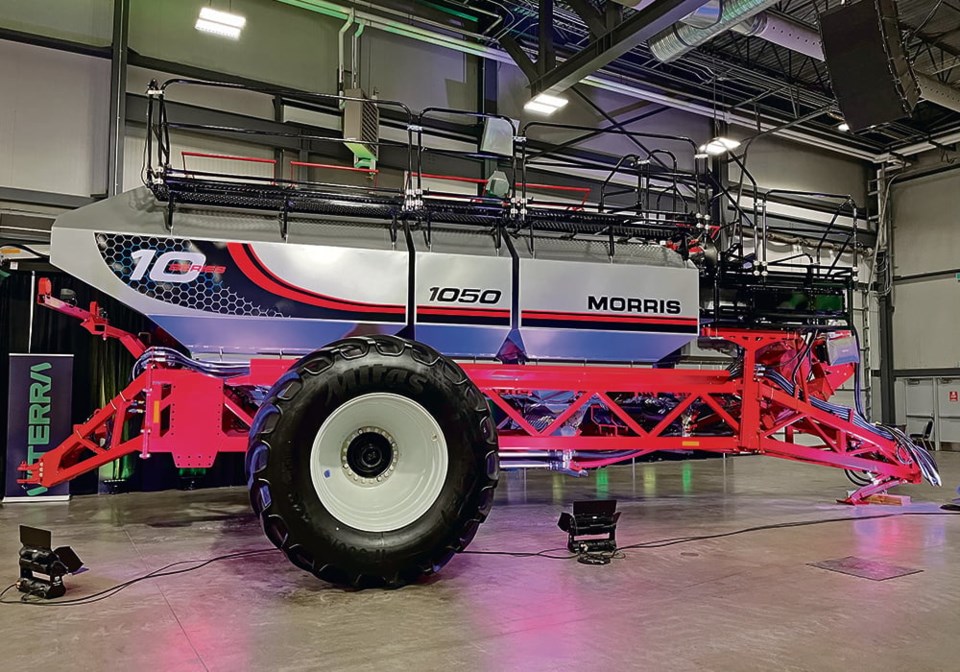REGINA — The largest tow-between air cart in the world debuted at Canada’s Farm Show in Regina last month.
Morris Equipment launched its 10 Series cart, the first new major product from Superior Farms Equipment. Superior itself launched in May after acquiring Morris and Rite Way Manufacturing three years ago.
Garth Massie, Canadian sales and marketing manager for Morris, said there are three models: 660, 820 and 1050, all based on bushel capacity.
Similar sized models have been available in Australia for a couple of years and the company has confidence in the product after reviewing and consulting with dealers and farmers on that continent.
“We just added that model, actually,” he said, nodding at the 1050 on display at the show’s Launch Pad.
“It was not even on our price book, officially, but we did find a price because we’ve sold one already.”
The buyer is from Western Canada, Massie said.
The idea behind the cart is to make farmers’ lives easier and safer.
“One of the big challenges is, how do we get more work done every day or more acres seeded every day,” he said.
“Because we plant all of our acreage in about a 30-day window, traditionally in the month of May, realistically they are probably talking about 21, 22 days to plant their whole crop.”
Farmers often feel that they are wasting time if they aren’t in the tractor seat going up and down the field.
However, he said probably 60 to 70 per cent of the time is spent seeding and the rest is spent turning on the headlands, filling the air cart with product or setting.
“There’s quite a few areas that we felt we could tweak and just tease out a few more acres per fill,” Massie said.
The focus became helping farmers seed with confidence.
“These (carts) have individual compartments now and each of them are on scales, so now we know what weight we’ve put in,” he said.
This compares to filling by tank volume. There is a margin of error when doing that because product density is unknown and there is compaction of the material as the cart moves down the field.
“Now that you’ve got the scales it shows you right in the tractor cab what you’ve got,” said Massie.
Farmers are using that to speed up the time they spend calibrating to get the right rates.
“Once you do a basic calibration, you’re probably going to go seed for maybe 20 acres, 40 acres. You’re going to stop and you’re going to, with a couple of button pushes on the monitor, do this dynamic calibration and apply correction factors and then get really, really accurate and feel competent about the rates you’re applying,” he said.
The carts come standard with brakes.
“When you think about it, that cart is over 40,000 pounds empty. We’ll add another 80,000 lb. of product when we fill it,” Massie said.
“Of course we’re going to attach it to a drill and our big drill is 45,000 lb. So you’ve got 160,000 lb. that, if you’re coming down a hill, is pushing you.”
The carts are manufactured in Minnedosa, Man., and the drills are made in Regina.
The parts business is moving from Yorkton, Sask., to Regina, but the research and development team will remain in Yorkton.
Massie said Morris will be taking orders for spring delivery. Equipment for Australia is generally built first because it’s a two-month sail and a two-week quarantine period once it arrives, but he expects broad availability.




